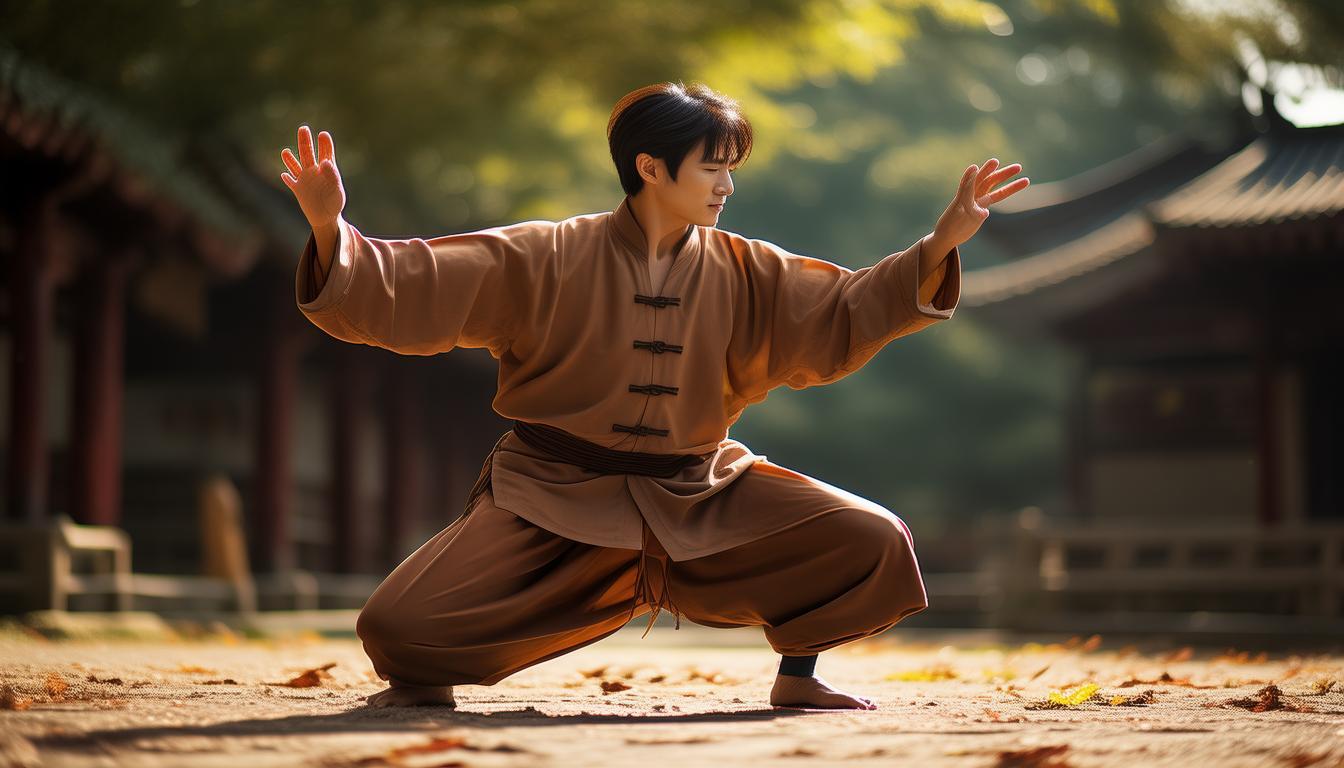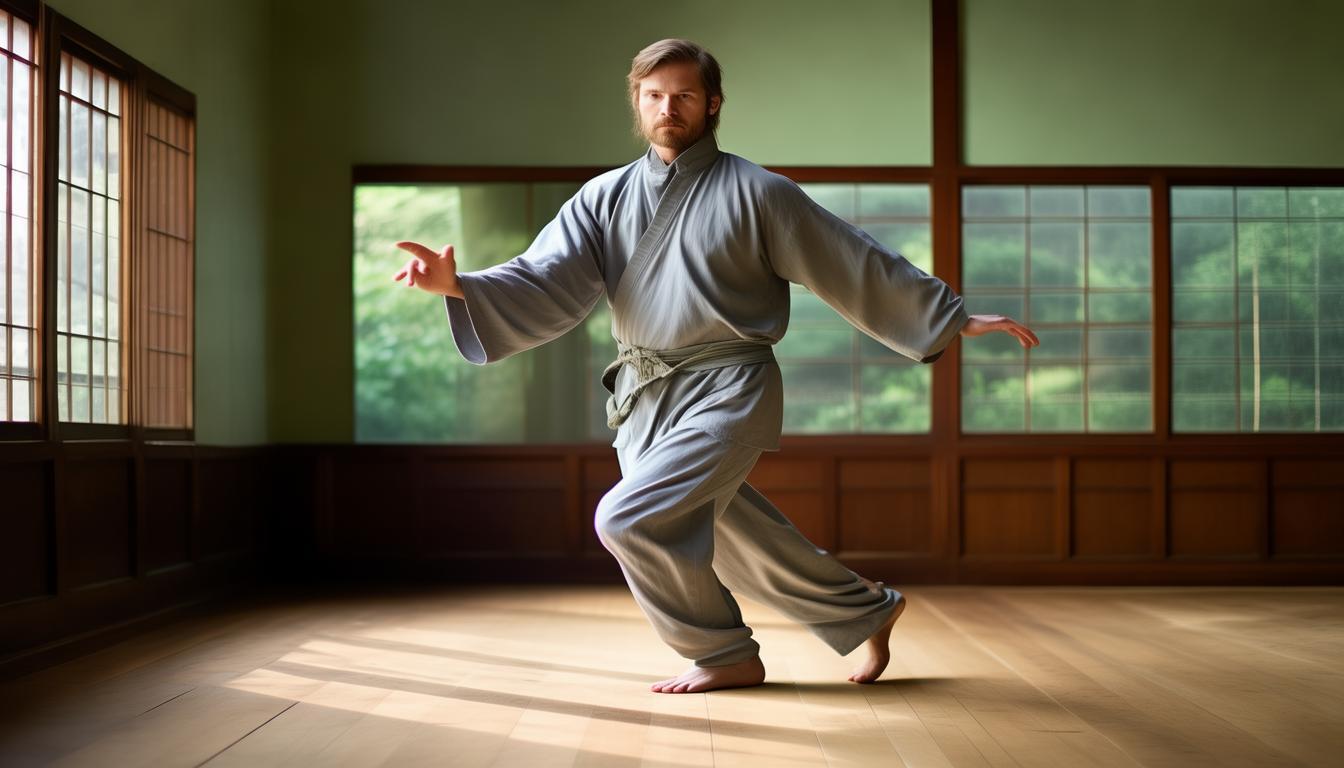Eighteen Tai Chi Styles: Appreciate The Charm Of Tai Chi And Explain The Origin, Techniques And Current Status Of Inheritance In Detail?
The eighteen styles of Tai Chi express the unique flavor of Tai Chi very thoroughly through the eighteen movements. Each movement contains the wisdom of kung fu and a profound understanding of life. The movements are interconnected and have their own system, like a graceful dance posture, exploring a harmonious balance between hardness and softness. Below I will elaborate on its origin, movement skills, exercise benefits, learning difficulty, and current status of inheritance.
Origin
The origin of the Eighteen Styles of Tai Chi can be traced back to the ancient Tai Chi system. These eighteen styles are like beautiful branches carefully pruned from a towering tree. They not only retain the essence of Tai Chi, but also allow more people to feel the charm of Tai Chi in a simple and smooth way. It simplifies the traditional long fist and uses eighteen representative movements to draw a vivid Tai Chi scroll. Each movement embodies the grinding of time and the essence of wisdom.
This did not come out of thin air, but brought together the experience and wisdom of countless Tai Chi predecessors. The original intention of the original compilation was, on the one hand, to allow more ordinary people to practice in a fast-paced modern society, and to inherit the essence of movements by strengthening their bodies. This itself is a respect for traditional Tai Chi and a inheritance of the martial arts left by our ancestors.
Action tips
Practicing the eighteen styles of Tai Chi cannot be just a casual way, but you must master the essence. When starting the movement, the mindset should be kept calm and the body should be relaxed, just like a quiet morning on the lake without any turbulence. The posture should be upright and breathe evenly. Your hands should be raised gracefully, and your eyes should slowly move, as if chasing the flowing clouds. Every cell in the body should be relaxed to lay a solid foundation for subsequent movements.

During the practice, you must carefully understand the inner connection between the movements at each step. For example, in the move of the penis tail, push and pull with both hands, the body and mind should skillfully shift the center of gravity, sharp eyes, and be good at insight, as if dealing with an invisible opponent, always maintaining a high level of vigilance, like a vigilant cheetah, ready to attack at any time. At the turning point of the action, you must grasp the rhythm and strength to ensure that the entire routine is coherent and smooth and complete in one go.
Benefits of exercise
The benefits of practicing Tai Chi are very significant. In terms of body, the eighteen movements of Tai Chi can effectively exercise a person's body. Each time you stretch your muscles and skeletal system, you get specific exercises, which can improve flexibility and coordination. For middle-aged and elderly people, practicing Tai Chi regularly can not only effectively prevent joint stiffness, but also reduce the chance of body pain.
From a psychological point of view, the process of practicing Tai Chi is actually a baptism to the soul and finding a quiet corner for yourself in the noisy world. When your focus is on every move, the pressure and troubles in daily life disappear from your mind like flowing water, calming your heart. If you practice persistently, a person's temperament and mentality will change significantly.
Difficulty in learning
The Eighteen Tai Chi styles are relatively easy for beginners to get started. There are not many movements, and the difficulty and intensity of learning are moderate. It does not require in-depth exploration like traditional Tai Chi to fully understand the connotation and style of the movement. When you are beginners, you may experience unskilled movements and appear clumsy due to insufficient physical coordination and movement coordination, and feel that your hands and feet are inconsistent.

As the number of exercises increases, the body begins to gradually adapt to the rhythm of the movements, and then you can feel the pleasant feeling of unity of human and fist. However, Tai Chi Courses Online , the subtlety of each action is not easy to learn. To truly master its deep meaning, you must be deeply understood through long-term and continuous practice and understanding. In other words, in the process of learning, we should not only practice, but also think about the principles in it ourselves.
Inheriting the status quo
Against the backdrop of diversified social forms today, many people have deeply realized its importance. In many parks and community squares, you can often see the eighteen styles of Tai Chi practice. Some people practice alone and are intoxicated by the personal Tai Chi world; some people practice collectively, demonstrating the power of unity and team spirit.
Although many people are practicing, hidden dangers still exist. More and more young people have a special liking for Tai Chi, but the inheritance and development of this sport is facing challenges. Tai Chi For Diabetes 's unique charm needs to be further explored and promoted. Many people may have difficulty sticking to it at the beginning and it is difficult to continue the sport. Inheritance is the foundation of development. Only by doing a good job of inheritance can it better exert its value.
Do you have any special experiences during the process of practicing the Eighteen Tai Chi styles? If you have something you find useful, you might as well like it and share it with everyone!


